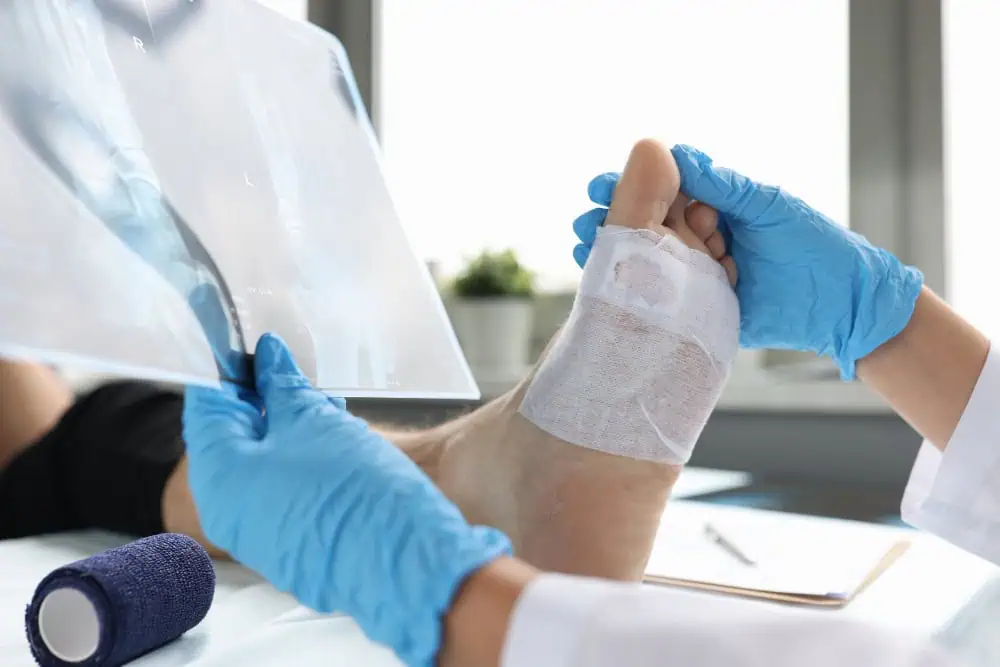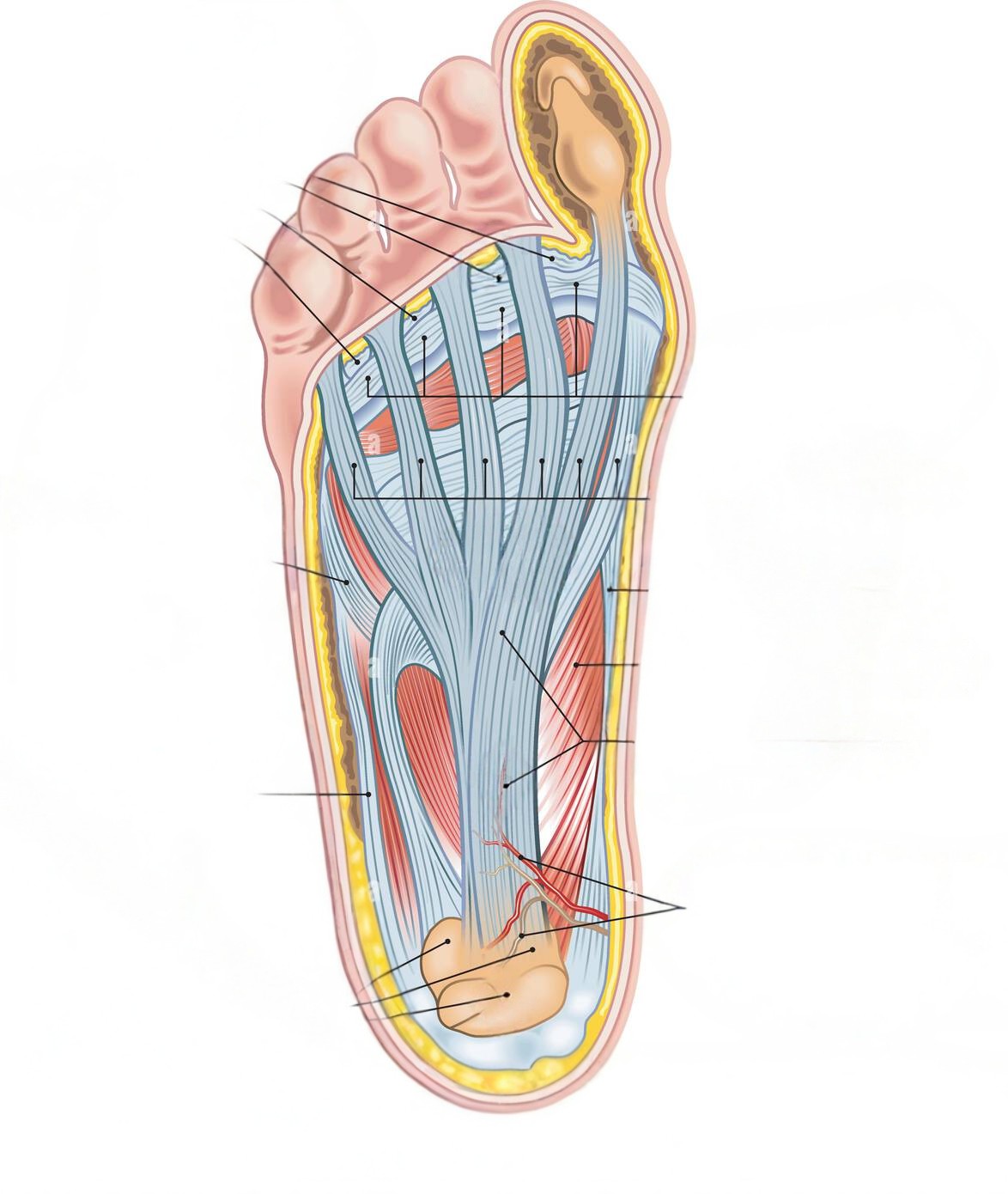

Diabetic Foot Treatments
Diabetes, a chronic metabolic condition, significantly impacts various bodily functions, with the feet being particularly vulnerable. At WeTreatFeet Podiatry, we understand the complexities of diabetic foot complications and aim to provide you with a detailed overview to help manage and prevent these issues effectively.
The Diabetic Foot: A Complex Structure
The human foot is an intricate structure comprising 26 bones, 33 joints, and over 120 muscles, ligaments, and nerves, each serving a unique purpose. Diabetes can alter the function of these components, leading to a range of complications1.
Diabetic Foot Treatments
Peripheral Neuropathy: The Root Cause
Diabetic peripheral neuropathy (DPN) is the most common issue we encounter in diabetic patients. This condition arises from prolonged exposure to high blood glucose levels, which damages the nerves. Here are the three primary types of neuropathy:
-
Sensory Neuropathy: This type leads to a loss of sensation, often described as numbness or a tingling sensation in the feet. Patients might not feel pain or temperature changes, increasing the risk of unnoticed injuries2.
-
Autonomic Neuropathy: Affecting the autonomic nervous system, this neuropathy disrupts involuntary actions like heart rate, blood vessel dilation, and sweat production. In the feet, it can lead to dry, cracked skin due to reduced sweat and oil secretion, making the skin more susceptible to damage and infection3.
-
Motor Neuropathy: This involves the progressive loss of muscle tone and strength, leading to muscle atrophy, cramping, and twitching. It’s a common cause of foot deformities like hammertoes and bunions, which alter foot mechanics and increase pressure points4.
The Impact of Neuropathy on Foot Health
Each type of neuropathy contributes uniquely to foot complications:
-
Sensory Loss: Without the ability to feel pain or temperature, minor injuries can go unnoticed, leading to ulcers or infections.
-
Autonomic Changes: The skin becomes dry and fragile, prone to fissures and infections due to reduced natural lubrication.
-
Motor Neuropathy: Altered foot shape and mechanics increase pressure points, leading to calluses, ulcers, and structural deformities.
Preventive Measures and Management
1. Diabetic Foot Treatments and Care Rituals:
-
Inspect your feet daily for cuts, blisters, redness, or swelling. Use a mirror if necessary to check the bottom of your feet.
-
Wash your feet daily with lukewarm water and mild soap, ensuring they are thoroughly dried, especially between the toes.
-
Moisturize your feet to prevent dry skin but avoid applying lotion between the toes where moisture can lead to infections.
2. Choosing Footwear Wisely:
-
Opt for shoes that fit well, providing ample room for your toes and support for your arches. Avoid high heels or shoes with pointed toes.
-
Consider custom orthotics if you have significant foot deformities or pressure points.
3. Blood Sugar Management:
-
Keeping your blood glucose levels within your target range is crucial. High glucose levels accelerate nerve damage and circulatory issues, exacerbating foot problems.
4. Regular Podiatric Check-ups:
-
Schedule regular visits to your podiatrist for comprehensive foot examinations. Early detection of issues can prevent severe complications.
5. Timely Intervention:
-
If you notice any changes or issues with your feet, seek professional care immediately. Early treatment can prevent minor problems from becoming severe. These essential Diabetic Foot Treatments increase the chance of successful foot preservation
The Importance of Education and Control
At WeTreatFeet Podiatry, we emphasize that with proper education and management, the progression of diabetic foot complications can be significantly slowed. Here are some key points:
-
Education: Understanding your condition and how to manage it daily can make a substantial difference. Knowledge about foot care, recognizing early signs of complications, and knowing when to seek help are vital.
-
Control: Managing your diabetes through diet, exercise, medication, and regular monitoring of blood sugar levels can reduce the risk of severe foot issues.
-
Statistics: It’s worth noting that due to better education and management, the rate of diabetes-related amputations has decreased by more than half over the last two decades
Diabetic Foot Treatments
Patients often receive Diabetic Foot Treatments in in the office, eliminating the need for a long Emergency Department or Hospital Stay. Call us first!
Conclusion
Diabetic foot treatments and complications are a significant concern, but with the right approach, they can be managed effectively. At WeTreatFeet Podiatry, we are committed to providing you with the knowledge and care needed to keep your feet healthy. Remember, proactive care, regular check-ups, and maintaining good control over your diabetes are your best defenses against foot complications. If you have any concerns or need further guidance, do not hesitate to reach out to us. Your feet are the foundation of your mobility, and we’re here to ensure they remain strong and healthy.
FAQ: Diabetic Foot Treatments
1. What are the primary goals of diabetic foot ulcer treatment?
The primary goals in treating diabetic foot ulcers are to reduce the risk of infection, promote healing, and prevent complications like amputation. This involves:
-
Prevention of infection: Immediate treatment to avoid bacterial growth and spread.
-
Off-loading: Reducing pressure on the ulcerated area to facilitate healing.
-
Wound care: Using appropriate dressings and medications to promote healing and manage the wound environment.
2. What non-surgical treatments are available for diabetic foot ulcers?
Non-surgical treatments for diabetic foot ulcers include:
-
Medication and Dressings: Use of saline, growth factors, ulcer dressings, and skin substitutes to promote healing.
-
Off-Loading: Non-removable knee-high devices, offloading shoes, cast shoes, and custom-made temporary shoes to reduce pressure on ulcers.
-
Pain Management: Medications for neuropathy-related pain and topical treatments like lidocaine patches.
-
Physiotherapy: To improve circulation and muscle strength.
-
Orthotics: Custom-fit orthotics to redistribute pressure and protect the foot.
3. When is surgery considered for diabetic foot ulcers?
Surgery is considered when:
-
Non-surgical treatments fail: If ulcers do not heal with conservative measures.
-
Infection is severe: To remove infected tissue or to address underlying vascular issues.
-
Foot deformities: Surgical correction of deformities like hammertoes or bunions that contribute to ulcer formation.
4. How can I prevent diabetic foot complications?
Preventive measures include:
-
Daily Foot Care: Inspect your feet daily for any signs of injury or infection.
-
Proper Footwear: Wear supportive, comfortable shoes and avoid going barefoot.
-
Blood Sugar Management: Keep your blood glucose levels under control to reduce the risk of complications.
-
Regular Check-ups: Schedule regular visits to your podiatrist for comprehensive foot examinations.
5. What are the benefits of non-surgical treatments for diabetic foot ulcers?
Non-surgical treatments offer several benefits:
-
Reduced Infection Rates: Non-surgical interventions significantly reduce wound infection rates compared to surgical methods.
-
Comparable Healing Rates: Ulcer healing rates are similar between non-surgical and surgical approaches.
-
Lower Amputation Rates: Non-surgical treatments result in significantly lower amputation rates within 6 months post-treatment.
-
Lower Mortality: Patients treated non-surgically have a lower mortality rate.
These treatments aim to manage and prevent diabetic foot complications effectively, focusing on both immediate care and long-term prevention strategies.




